We have researched and analyzed each generation to bring you the ultimate guide to the best and worst Honda Accord years. From the groundbreaking innovations of the 5th generation to the cutting-edge features of the 11th generation, we delve deep into each model year to uncover their standout qualities and potential pitfalls.
If you are a seasoned Honda enthusiast or a first-time buyer, this comprehensive guide is your roadmap to making an informed decision when it comes to selecting the ideal Honda Accord model year for your needs.
Honda Accord Generations
Since 1976, the Honda Accord has garnered widespread popularity among drivers worldwide. The Accord has gone through significant changes over 11 generations, with particular focus on the 5th to 11th iterations starting in 1994.
| Generations | Years |
|---|---|
| 5th Generation (CD) | 1994-1997 |
| 6th Generation (CF/CG) | 1998-2002 |
| 7th Generation (CM) | 2003-2007 |
| 8th Generation (CP/CS) | 2008-2012 |
| 9th Generation (CR/CT) | 2013-2017 |
| 10th Generation (CV) | 2018-2022 |
| 11th Generation (CY) | 2023-Present |
Understanding the evolution of this iconic model provides a comprehensive view of its transformation over the years. Each generation of the Honda Accord offers unique characteristics and upgrades that contribute to its reputation as a reliable vehicle. Examining the best and worst years of the Accord can offer valuable insights into its performance and features.
Honda Accord Best, Neutral, and Worst Years
When evaluating the Honda Accord’s best and worst years from various generations, several key factors are taken into consideration. These factors include owner-reported reliability through surveys, annual maintenance costs, safety ratings, Consumer Reports reliability and owner satisfaction scores, NHTSA recalls and complaints, as well as ratings from Edmunds, JD Power, Kelley Blue Book (KBB), Vehicle History, and Cars.com.
By analyzing these metrics across different years of the Honda Accord, we can determine the best-performing models in terms of reliability, maintenance costs, safety features, and overall customer satisfaction.
Some years of the Honda Accord have excelled in all these areas, earning the title of the best years for Honda Accord. These would typically receive high marks across all evaluation criteria and stand out as exceptional choices for buyers seeking a reliable and highly-rated vehicle.
There may be some years that fall short in one or more key aspects, earning them a reputation as the worst years for the Honda Accord due to concerns over reliability issues or high maintenance costs.
The graph provides a comprehensive overview of the Honda Accord’s performance by combining data from multiple sources. It offers a clear visualization of various aspects such as fuel efficiency, horsepower, and acceleration.
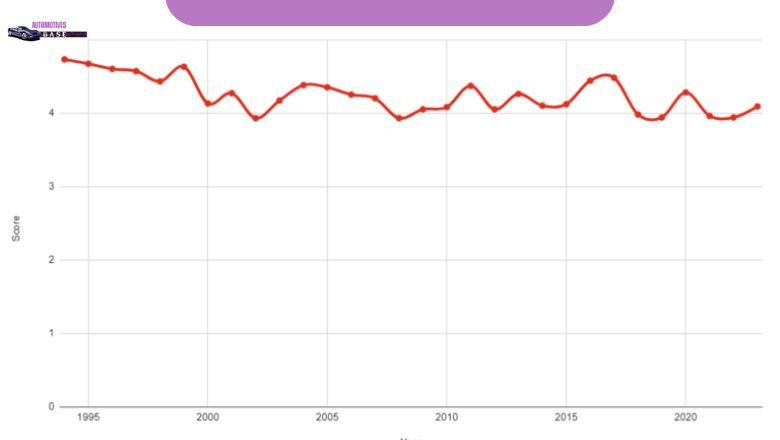
By analyzing this data collectively, one can gain insights into how the Accord performs in different categories compared to other vehicles in its class. The graph allows for easy comparison between different models and model years of the Honda Accord.
Neutral years represent vehicle models that didn’t excel in terms of performance or reliability yet didn’t experience major issues. These models can be considered average performers and may still be viable options depending on their maintenance history and current condition. Factors like NHTSA recalls have a negative impact on the overall rating of a model year.
A high number of complaints and recalls will lower the car’s reliability score. Lower scores indicate less reliable vehicles in general. It is essential to consider these factors when evaluating the long-term potential of a vehicle in a neutral year.
Best And Worst Years For Honda Accord 5th Generation (1994–1997)
The Honda Accord’s 5th generation marked a significant evolution for the popular sedan. With its sleek and aerodynamic design, coupled with an efficient powertrain, this generation solidified the Accord’s reputation as a standout in the midsize sedan market. The years between 1994 and 1997 were particularly strong for the Accord, showcasing Honda’s commitment to innovation and quality.
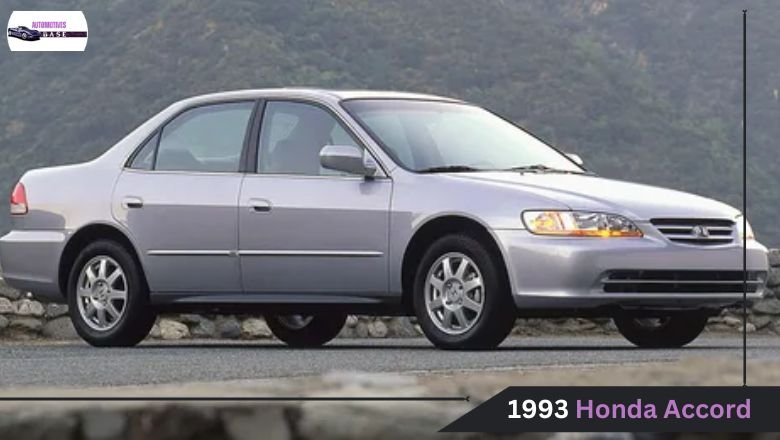
The year 1994 stood out as one of the best for the Accord in this generation. The enhancements made to the vehicle’s performance and overall design garnered widespread acclaim from consumers and critics alike. Towards the end of its run in 1997, some models experienced issues related to build quality and reliability, resulting in decreased customer satisfaction levels.
The Best Years: 1994
1994 is best Honda Accord year in its generation, boasting a new 2.2L four-cylinder engine that enhanced both performance and fuel efficiency. Setting a new benchmark for safety features, the vehicle came equipped with dual front airbags, showcasing Honda’s dedication to protecting its drivers and passengers.
The 1994 model introduced cutting-edge technology for its time, offering an optional anti-lock braking system and a four-speed automatic transmission. With these advancements, the 1994 Accord established itself as a standout year within the lineup, providing drivers with a blend of power, safety, and innovation.
The Neutral Years: 1995, 1996
The neutral years of 1995 and 1996 marked a continuation of the robust design and performance established in the previous model year. These years were not devoid of issues. Reports surfaced regarding airbag problems during this period, causing safety concerns among drivers. These issues did not significantly affect the vehicles’ overall performance, they did prompt necessary recalls to address potential risks.
The focus on maintaining design continuity while addressing safety concerns reflected the manufacturer’s commitment to quality and consumer satisfaction during this phase. The evolution of improvements laid the groundwork for future enhancements in subsequent model years.
The Worst Years: 1997
The year 1997 marked the end of the 5th generation, but it was not without its challenges. Considered the worst year of this generation, numerous recalls marred the reputation of vehicles from this era. A significant number of these recalls were linked to issues with exterior lighting systems.
These problems raised red flags about safety and tarnished the ownership experience for many drivers. The constant need for repairs and modifications created inconvenience and frustration among owners. As a result, 1997 stands out as a particularly turbulent year in the automotive industry’s history.
Best And Worst Honda Accord Years, 6th Generation (1998–2002)
The 6th Generation Honda Accord, produced between 1998 and 2002, marked a significant evolution towards higher-end features and a greater focus on luxury and comfort. During this period, Honda introduced a V6 engine option to cater to customers looking for increased performance. Some models were rated as ULEVs (Ultra Low Emission Vehicles), highlighting Honda’s commitment to environmental sustainability.
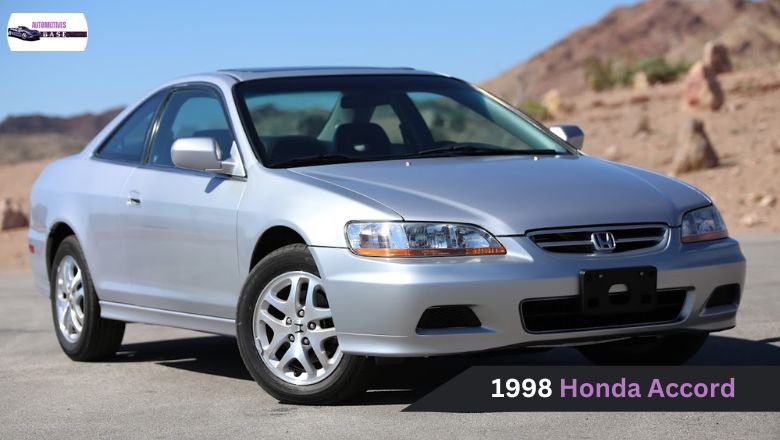
The 6th Generation Accord faced challenges with recalls that impacted its reliability reputation in later years. These recalls raised concerns among consumers about the consistency of quality in Honda’s flagship model. The introduction of innovative features like V6 engines and ULEV ratings helped solidify the Accord’s position as a competitive player in the midsize sedan market during this era.
The Best Years: 1998
The 1998 model year is considered the best in this generation of Honda Accords. It featured an optional 3.0L V6 engine that improved performance and competitiveness against other models with six-cylinder engines.
Honda took steps to reduce vehicle emissions, earning some 1998 Accords a ULEV rating. This year also saw recalls related to electrical and powertrain issues, which were prevalent in vehicles from that era. The advancements and upgrades introduced in 1998 made it a standout year for the Accord lineup.
The Neutral Years: 1999, 2000, 2001
During the Neutral Years of 1999–2001, vehicles from this generation maintained performance and safety standards from previous models but also faced persistent issues. Powertrain problems and transmission failures were common, resulting in several recalls during these years.
Airbag malfunctions resurfaced in the 2000, 2001, and 2002 models, posing further challenges for drivers. The reputation of vehicles from this period was affected by these recurring issues. The continuity of problems from previous model years underscored a need for more comprehensive solutions in future designs.
The Worst Years: 2002
The 2002 model year of the Honda Accord from the 6th generation is widely regarded as one of the weakest in terms of reliability. It maintained some favorable characteristics from previous years, such as performance and comfort, but was plagued by recurring airbag and transmission problems. These issues escalated in severity, leading to a surge in complaints and recalls, causing concern among consumers.
The 2002 Accord still managed to deliver a decent driving experience and interior amenities. However, its reputation took a hit due to reliability issues overshadowing its strengths within this particular generation.
Best And Worst Honda Accord Years, 7th Generation (2003–2007)
The Honda Accord 7th Generation, produced from 2003 to 2007, is a well-known sedan for its reliability and comfort. It featured a sleek redesign and incorporated new safety features like side curtain airbags, enhancing the overall driving experience. The years 2004 and 2005 are considered some of the best for this generation, as they had fewer reported transmission problems and improved performance.
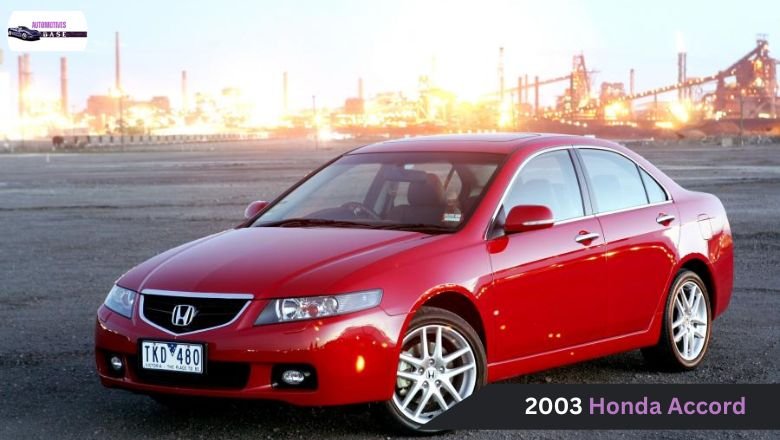
The worst years for this model were in 2003 and 2006, when widespread transmission issues led to recalls affecting many owners. The Honda Accord 7th Generation continued to be a popular choice among consumers due to its reputation for dependability.
Owners of models from the early years often experienced frustrations with frequent repairs and replacements related to faulty transmissions. Those who purchased versions from later production years generally enjoyed better performance and reliability.
The Best Years: 2007
The 2007 Honda Accord is widely regarded as the standout year of the 7th generation. It addressed previous transmission issues and gained a reputation for reliability. Safety was a key focus, with features like side curtain airbags and stability control becoming standard.
The addition of a powerful 3.5L V6 engine option appealed to performance-oriented drivers. There was a recall in October 2012 related to the V6 engine, but Honda quickly resolved the issue. The 2007 model year is remembered for its balanced combination of safety, comfort, reliability, and performance.
The Neutral Years: 2005, 2006
The 2005 and 2006 model years marked a period of neutrality for this generation of vehicles. Incremental improvements were made in design and technology during these years. Safety remained a top priority, with the introduction of new active safety features and enhancements to crashworthiness in the Accord.
Issues like sudden airbag deployments persisted during this time, impacting the overall reputation of these models. The focus on refining existing features rather than introducing groundbreaking innovations characterized the approach taken by manufacturers in these neutral years. Customers continued to experience some challenges with their vehicles, but improvements were noticeable compared to previous model years.
The Worst Years: 2003, 2004
The years 2003 and 2004 marked a significant downturn for the 7th generation Accord, often regarded as the worst years for this model. These vehicles were plagued by severe transmission issues that drew widespread complaints. More than half of the grievances filed with the NHTSA were attributed to powertrain problems during this period.
The high volume of concerns prompted several recalls to address the reliability issues that affected many Accord owners. These challenges tarnished the once pristine reputation of the Accord and led to a tough period for Honda’s flagship model.
Best And Worst Honda Accord Years, 8th Generation (2008–2012)
The 8th generation Honda Accord showcased significant advancements in technology and luxury compared to its predecessors. The 2008 debut marked a new era for the model after a complete redesign, emphasizing Honda’s commitment to innovation.
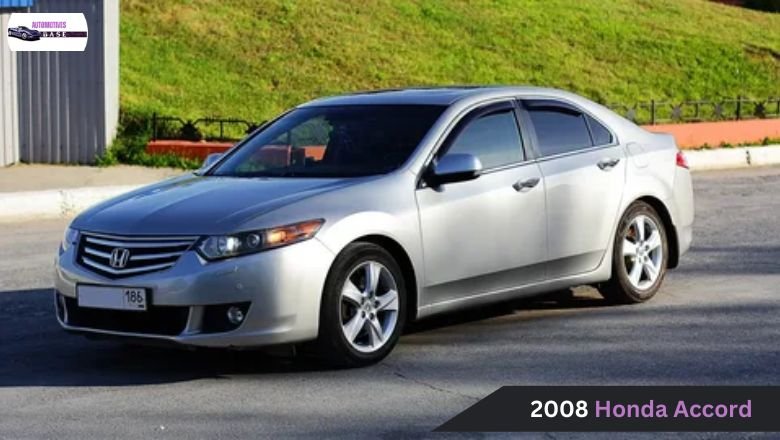
The years following the launch saw steady improvements in performance and comfort features, solidifying the Accord’s reputation as a top-selling sedan.
The Best Years: 2010, 2011, 2012
The 2010, 2011, and 2012 models of the 8th Generation Honda Accord are highly regarded as the best years for this vehicle. These later models were equipped with updated features such as a USB audio interface and enhanced safety equipment. Owners have reported fewer issues and increased reliability with these newer versions compared to the earlier models in the same generation.
The 2011 model underwent a mid-cycle refresh that included changes to the front end, interior updates, and improved fuel efficiency. These three years marked significant improvements in performance, technology, and the overall driving experience for Honda Accord enthusiasts.
The Neutral Years: 2009
In 2009, Honda made efforts to improve upon the shortcomings of its 8th Generation Accord model from the previous year. The updates included upgraded interior materials and a wider array of standard features, aiming to enhance the overall driving experience for customers. Some lingering issues continued to persist in the form of airbag deployment problems, which had been a concern since the 2008 release.
Honda’s approach during this neutral year was focused on refining existing elements rather than introducing drastic changes to the model. The 2009 Accord represented a balance between addressing known issues and maintaining continuity in design and performance.
The Worst Years: 2008
The 2008 model year of the 8th Generation Accord is infamous for being particularly troublesome. The main problems revolved around the airbags and service brakes. Many reports surfaced regarding side curtain airbags on the passenger side deploying without warning, sometimes even while the car was in motion or when doors were closed.
Honda took action by issuing a recall in October 2015, affecting around 300,000 Accords. The root cause was identified as a software glitch in the vehicle’s airbag control unit. This unexpected deployment posed serious safety risks for both passengers and drivers. The damage had already tarnished the reputation of this specific model year.
Best And Worst Honda Accord Years, 9th Generation (2013–2017)
The 9th generation Honda Accord, which was produced from 2013 to 2017, marked a significant evolution for the popular model. Upon its debut in 2013, the Accord impressed with a fresh exterior design that exuded modernity and sophistication. The interior received a notable upgrade, showcasing higher-quality materials and a more luxurious feel.
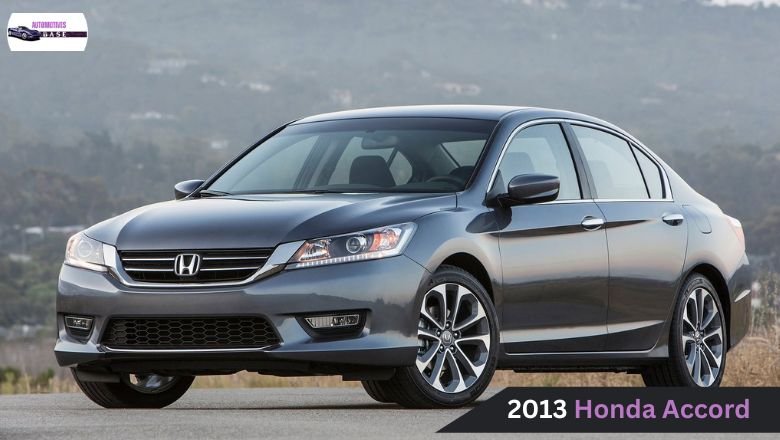
Drivers also appreciated the improved ride quality, which offered a smoother and quieter driving experience compared to previous iterations. The 2014 Honda Accord garnered praise for its agility and handling on the road, making it one of the standout years for this generation.
The Best Years: 2016, 2017
The 2016 and 2017 are Honda Accord best years. In 2016, Honda introduced the innovative Honda Sensing suite, which offered a range of cutting-edge safety features. These included the Collision Mitigation Braking System, Road Departure Mitigation, and Adaptive Cruise Control.
The availability of these features across all trim levels made the Accord stand out in terms of safety technology. In 2017, Honda maintained its focus on safety by continuing to offer Honda Sensing as a key feature in the Accord lineup.
This commitment to enhancing driver and passenger safety solidified the reputation of the 9th Generation Accord as a dependable choice for car buyers looking for advanced safety features. The combination of stylish design, reliable performance, and state-of-the-art safety technology makes the 2016 and 2017 models standout years for Honda Accord enthusiasts.
The Neutral Years: 2014, 2015
During the neutral years of 2014 and 2015, the 9th generation Honda Accord faced a mixed reputation. The 2014 model was plagued by problems with its electrical and engine components, leading to frustration among owners. Honda made efforts to address some of these engine issues in the 2015 version. Complaints about the electrical system persisted throughout both years.
During this period, the Accord struggled to fully shake off its reliability concerns. Some drivers experienced smoother performance with the 2015 model compared to its predecessor; others were still troubled by ongoing issues. These neutral years showcased a transitional phase for the Accord as Honda worked towards refining its design and addressing customer feedback.
The Worst Years: 2013
The 2013 model of the 9th Generation Accord is often regarded as a challenging year for Honda. It brought in several new features and advancements, but owners faced a wide range of problems with this particular model. A common complaint was premature brake wear, causing safety concerns for many drivers. Issues with the starter and battery also plagued numerous owners, leading to frequent breakdowns and frustrating experiences on the road.
The introduction of new technologies did not seem to alleviate these issues, leaving customers disappointed and seeking repairs at their own expense. Many felt let down by the reputation Honda had built for reliability over the years. The continuous problems with the 2013 Accord highlighted underlying quality control issues within the manufacturing process.
Best And Worst Honda Accord Years, 10th Generation (2018-2022)
The best year for the Honda Accord 10th generation is considered to be 2018. This was the year when the model first hit the market with its fresh redesign and innovative features, setting high expectations for future releases. The debut of turbocharged engine options and a hybrid model in 2018 showcased Honda’s commitment to blending performance and fuel efficiency seamlessly.

The worst year for this generation might be 2022. Some users reported concerns about reliability issues cropping up within certain models released that year, affecting overall satisfaction levels among consumers. Honda continues to prioritize safety and technological advancements across all its vehicles, striving to address any shortcomings and ensure a positive ownership experience for customers.
The Best Years: 2020, 2021
The 10th Generation Accord reached its peak in the years 2020 and 2021. In 2020, it was named the Edmunds Top-Rated Sedan due to significant advancements in technology, safety, and performance. The standout feature was the Honda Sensing Suite, which ensured driver safety across all trims. Continuing this success, the 2021 model earned the prestigious Kelley Blue Book Best Buy Mid-Size Car Award.
The 2021 Accord further innovated by introducing wireless Apple Car Play and Android Auto integration for enhanced connectivity. This feature marked a milestone for convenience and modernization in vehicle technology. Both of these years showcased Honda’s commitment to improving the driving experience through cutting-edge features and accolades, as industry leaders recognized the Accord’s excellence.
The Neutral Years: 2019
In 2019, the 10th Generation Accord was deemed a neutral year by automotive experts. This model maintained a strong safety record, achieving a perfect 5-star rating in all safety tests and earning the prestigious 2019 IIHS Top Safety Pick acknowledgment. The 2019 Accord did not introduce significant enhancements over its predecessor.
Customers found that the design and features of the 2019 Honda Accord were largely unchanged from the previous year. Reliability remained high, but some enthusiasts felt that Honda could have been more innovative with this particular model. The consensus was that, although dependable and safe, the 2019 Accord didn’t excite consumers through groundbreaking improvements or fresh design elements.
The Worst Years: 2018
The 2018 model year of the Honda Accord, part of the 10th Generation, is often regarded as one of the worst in terms of overall customer satisfaction. Owners specifically cited problems with the forward collision avoidance system, a critical safety feature in modern vehicles. Drivers reported instances where the system failed to work correctly, leading to potential safety risks on the road.
The damage to the accord’s reputation was significant. This setback highlighted the importance of thorough testing and quality control in automotive design and manufacturing processes. The 2018 Accord’s troubles underscored how even well-intentioned features can backfire if not implemented effectively.
Honda Accord 11th Generation (2023)
The 2023 Honda Accord strikes a balance between classic styling and modern updates. With sleek lines and a wider stance, the design exudes a more aggressive look. The interior is spacious and luxurious, featuring premium materials for enhanced comfort.
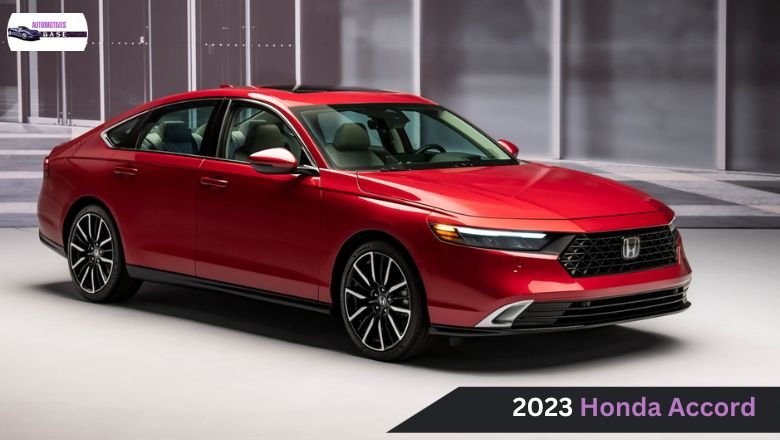
Technology is a key highlight in the 2023 Accord, with a larger touchscreen infotainment system supporting Apple Car Play and Android Auto. A customizable digital gauge cluster and high-quality sound system enhance the driving experience. Honda offers efficient powertrain options for different needs.
Honda Accord Average Resale Values
The average resale values of the Honda Accord vary across different generations, as indicated by the graph. Each generation of the Accord has its own unique value retention trend. The graph can help potential buyers or sellers understand how the value of a particular model may depreciate over time.

It shows that newer generations tend to have higher resale values compared to older ones, reflecting both market demand and the overall condition of the vehicle.
Conclusion
Selecting the best and worst Honda Accord years requires a thorough examination of its development and any potential drawbacks. By utilizing this comprehensive guide, you can confidently identify the Honda Accord years to steer clear of and those that are worth pursuing. Remember to prioritize your needs and preferences when making your decision, as each model year caters to different drivers and priorities.
FAQ`s
What Is The Most Common Problem With A Honda Accord?
One of the most common issues reported by Honda Accord owners is related to the transmission system. They often face problems such as slipping, abrupt shifting, and sometimes even complete failure of the transmission. These problems can lead to difficulties in driving, unsafe conditions on the road, and potential costly repairs.
Are Honda Accords High Maintenance?
Honda Accords are known for their reliability and durability, making them a popular choice among car buyers. With a long-standing reputation for producing dependable vehicles, Honda has built trust with its customers over the years. Owners often find that their Accord can easily surpass the 100,000-mile mark with minimal maintenance issues. This can result in lower repair costs and a longer overall lifespan for the vehicle. Regular maintenance, such as oil changes and tire rotations, can help keep your Accord running smoothly for years to come.
Is The Honda CR-V Worth Buying?
With a starting price of $29,500, the Honda CR-V stands out as a compelling choice in the compact SUV segment. Its balanced combination of reliability, build quality, and user-friendly tech makes it a standout option for buyers seeking a well-rounded vehicle. The spacious cabin offers ample room for passengers and cargo, enhancing the overall comfort and practicality of the CR-V. Furthermore, its impressive safety features provide peace of mind on the road, adding an extra layer of value to the purchase.

